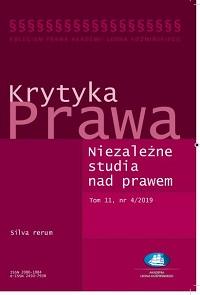The Ballot Paper: a Constitutional Instrument of Electoral Democracy or a Means of Manipulating the Electorate?
Vladyslav Fedorenko
Research Center for Forensic Examination on Intellectual Property of the Ministry of Justice of Ukraine
Volodymyr Nesterovych
Lugansk State University of Internal Affairs named after E.O. Didorenko
Ian Bernaziuk
V.I. Vernadsky Taurida National University
3/2021 13 (1) Krytyka Prawa. Niezależne Studia nad Prawem
DOI 10.7206/kp.2080-1084.428








